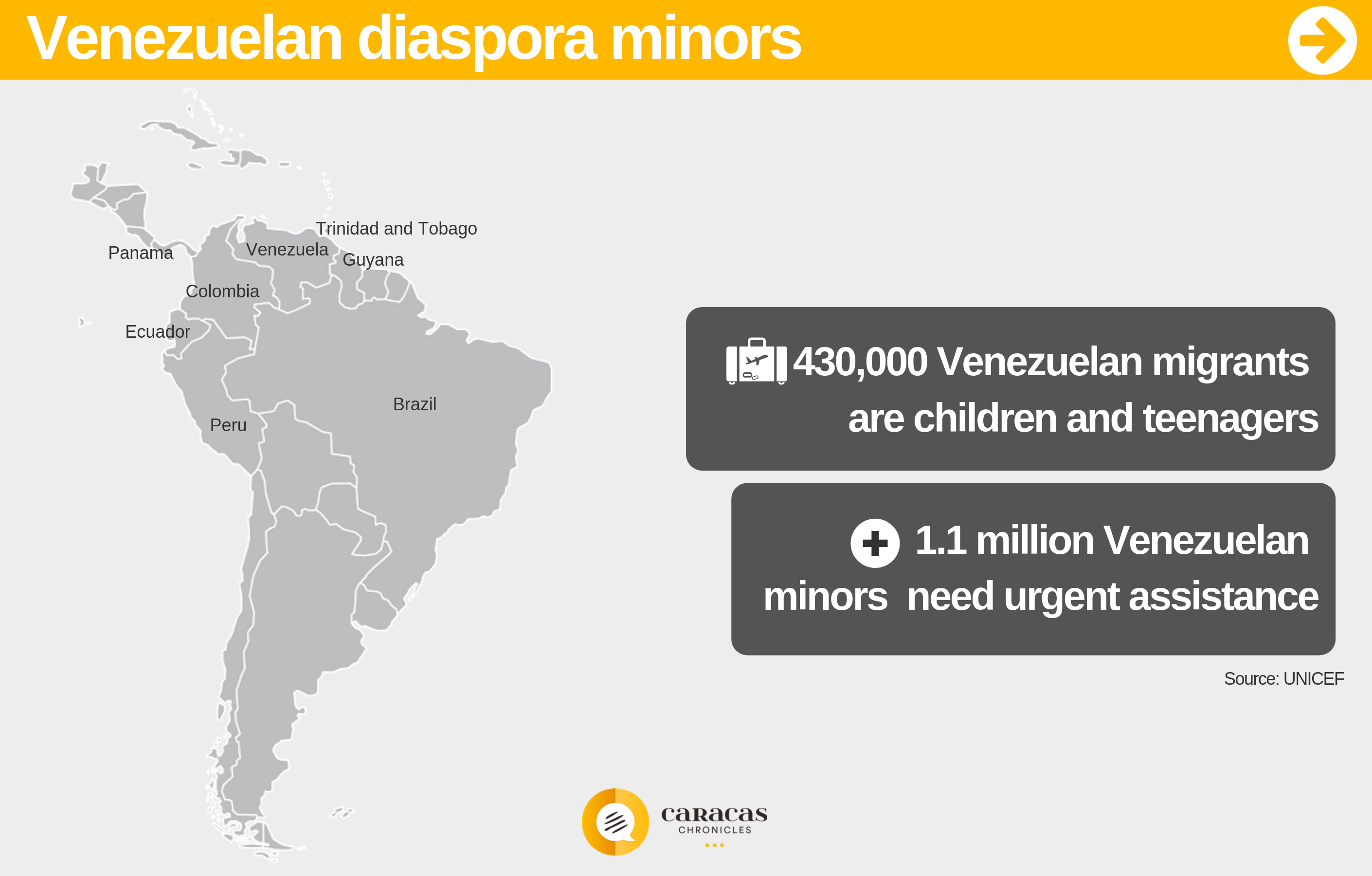Children Getting Lost in the South
Venezuelan NGOs discovered a new migratory phenomenon: unaccompanied minors traveling through the mines in Guayana.


Image: Sofía Jaimes Barreto
A new dimension of the Venezuelan migratory explosion, about which we mostly know of the Andes route, also happens at the south of the nation, in Bolívar and it includes internal migration. The largest state of the country has turned into a middle ground for people from central Venezuela, moving in to make money in anything mining-related and then carry on with their journey with some foreign currency or gold in their pockets.
The Internal Migration Organization estimates that by July, a new migration wave exploded in the border with Bolívar and around 900,000 people move across it monthly. This is happening just when the border with Colombia in Tachira is reopening and the competition between GNB, colectivos and paramilitaries for people trafficking rages.
In this context of fractured families, children and teenagers are part of the group that NGO Centros Comunitarios de Aprendizaje por los Derechos de la Niñez y Adolescencia (Cecodap) calls “the left behind,” exposed to poor schooling and malnutrition. Some babies stop breastfeeding because their mothers move to other countries.
In 2018, “the left behind” children became the third reason for going to a therapy session in Cecodap. It was ranked fifth in 2017.
As part of their work in promoting and defending the rights of children and teenagers, Cecodap monitors and provides therapy for over 100 schools, where they look after minors and their caregivers. In 2018, “the left behind” children became the third reason for going to a therapy session in Cecodap. It was ranked fifth in 2017.
Fe y Alegría reported that 6,044 of their 110,000 students had seen their parents migrate, up until January 2019.
Leaving on Their Own
Mairis Balza, general coordinator of NGO Comisión para los Derechos Humanos y la Ciudadanía (Codehciu,) says that this is a migration phenomenon forced by the State’s inefficiency: “Those who leave do it fundamentally because of socio-economic reasons that threaten their most basic rights. Lack of medicine and opportunities, and an institutional crisis that has gotten worse since 2007.”
This NGO offers workshops for women in vulnerable sectors in Bolívar and communities affected by illegal mining, detecting a new kind of migration: lone teenagers who, on their way to new countries or once they’re there, face human trafficking, sexual exploitation or forced recruitment by gangs and irregular groups. This can happen to any minor traveling with a family, but if they’re alone the risk is greater. “Many children and teenagers on the move end up being victims of organized crime networks, they’re tricked into it,” says Balza. “But all of it starts because they see forced migration as necessary for self preservation.”
According to this UNHCR report from June, 50.2 % of families interviewed faces risks during their trip, because of their ages, gender or health, or had to resort to begging, sending their children to work or even sex for survival.
An employee of an organization in the border with Brazil where, according to UNHCR, Venezuelan children and teenagers are almost half of the refugees, confessed that it made her sad to see how these long lines of people traveling on foot had more and more teenagers: “They generally travel in groups, getting solidarity on the way, mostly shoes and food, but some of their families say they don’t hear from them again.”
Most children identified in the region are males between 14 and 17 years old, going after their parents.
Most children identified in the region are males between 14 and 17 years old, going after their parents. “We’ve heard about kids under the care of grandparents or underage siblings taking care of each other because their parents left for the mines,” said the same source. “They stay on their own until they decide to leave, too.” Other kids were waiting for their parents to come back, but they only got money to make the trip on their own to a place where they can wait.”
In general, these kids spend days walking through the rainforest or asking for rides. Brazil might be their final destination or a place to make money and move somewhere else.
Even when these children manage to overcome the dangers of the journey, the threats to their safety linger. Despite the efforts that receiving countries make, basic services have collapsed in many areas, all because of Venezuelan migration.

There are around 430,000 Venezuelan children in Colombia, Brasil, Guyana, Trinidad and Tobago, Ecuador, Peru and Panama. All of them need some kind of assistance, including kids who migrate on their own. 1,1 children will need protection and access to basic services all across Latin America and the Caribbean.
Unicef estimates that there are around 430,000 Venezuelan children in Colombia, Brasil, Guyana, Trinidad and Tobago, Ecuador, Peru and Panama. All of them need some kind of assistance, including kids who migrate on their own.
In June, 2019, this institution said that, as a consequence of the migration crisis, 1,1 children will need protection and access to basic services all across Latin America and the Caribbean—among them, those who left, those who are returning and those who live in transit and sheltering communities.
Caracas Chronicles is 100% reader-supported.
We’ve been able to hang on for 22 years in one of the craziest media landscapes in the world. We’ve seen different media outlets in Venezuela (and abroad) closing shop, something we’re looking to avoid at all costs. Your collaboration goes a long way in helping us weather the storm.
Donate




